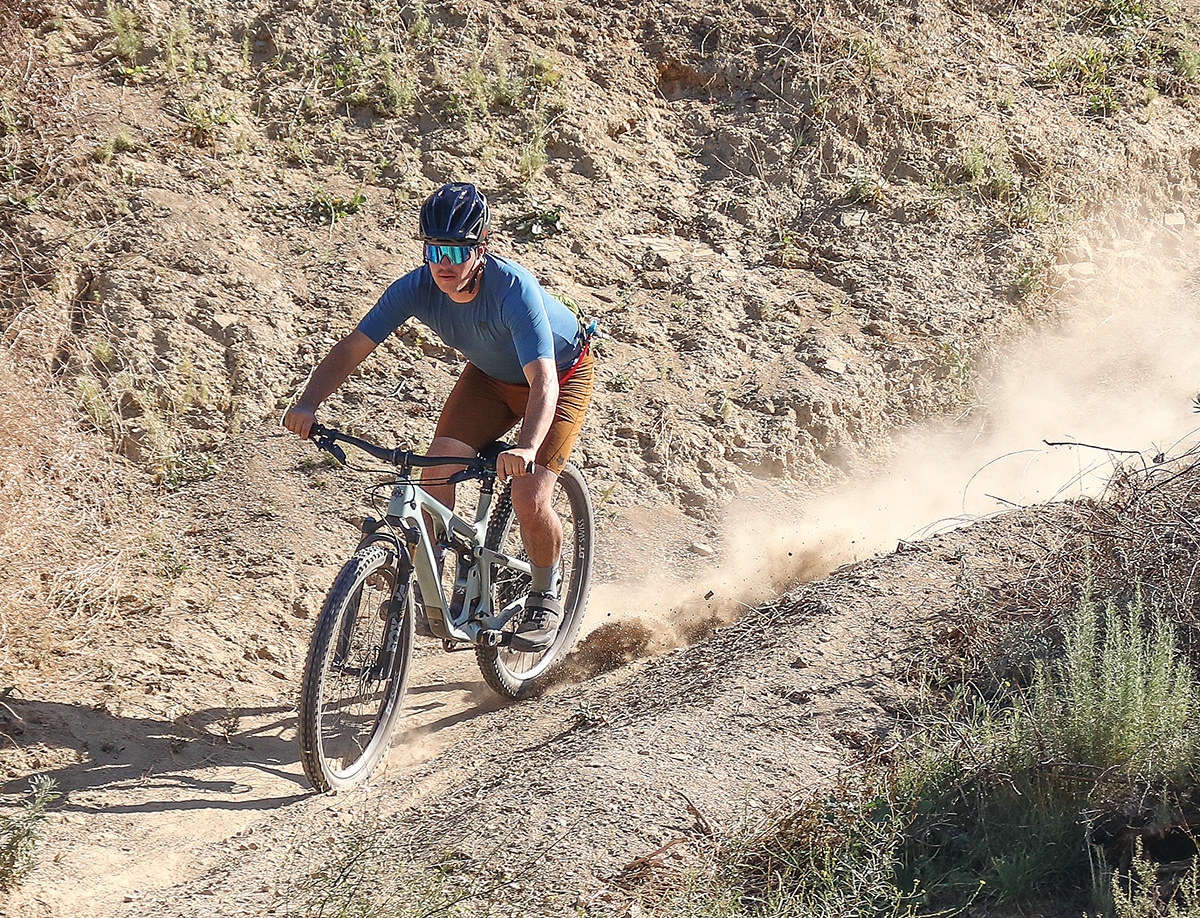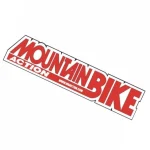LONG TERM REVIEW: YETI SB120 – BLURING THE LINES OF CROSS COUNTRY AND TRAIL MOUNTAIN BIKES
The prefect mix of fun and fast?

LONG TERM REVIEW: YETI SB120 – BLURING THE LINES
Yeti is one of those heritage brands that dates back to the 1985 F.R.O. (For Racing Only), which was a 4130 chromoly heli-arc welded masterpiece. Their legacy carries on with their modern bikes like the SB120, which is the direct replacement of the SB115.
Yeti made this bike to be less of a racer and more of a cross-country trail chaser. In addition to bumping rear-wheel travel up to 120mm, they slackened it, lengthened it and spec’d it with components that are made to stand the test of time. With all that, they still strived to retain some of the lightweight speed, precision and efficiency that made the SB115 such a good bike. The SB120 may be more capable, but it’s no less efficient.
FRAME
Our test bike was the T3 build, which means it has Yeti’s famous Turq carbon layup, which they claim uses the highest-quality carbon fiber laid up in a way that provides an optimized stiffness-to-compliance ratio. It’s also lighter than their C-series carbon models at an estimated 225 grams per frame.
It has internally routed cable tubes, a threaded bottom bracket and is ready to receive SRAM’S Transmission with the inclusion of SRAM’s UDH (Universal Derailleur Hanger). They’ve also opened up the seat tube to allow a wider range of dropper posts on all sizes—150mm on the smaller sizes and 200+ mm on the larger sizes.

This bike isn’t just an SB115 with 5mm of extra travel—it has an all-new silhouette that is longer, lower and slacker than its predecessor. Starting in the back, the SB120 has size-specific chainstays that grow in 2mm increments as the sizing gets larger; our size large measured in at 439mm. On a size large, reach comes in at 475mm, the head angle is 67.5 degrees and the effective seat angle 76.5 degrees.
SUSPENSION
Except for the SB160E, Yeti’s entire lineup features the Switch Infinity suspension design, which is a modified four-bar system that uses a sliding pivot in place of extra linkage. The Switch Infinity link was developed with the help of Fox and uses two parallel Kashima-coated sliders inserted into a moving link. This link slides up and down as the suspension compresses and helps separate the anti-squat and anti-rise forces for more precise tuning of the suspension.

With this system, it achieves 120mm of rear suspension travel with a Fox Factory Float TPS shock with a three-position compression lockout, a three-channel open compression setting and a rebound knob. Our test bike comes with a 130mm-travel Fox 34 Factory fork with the Grip2 damper that has high- and low-speed compression and rebound adjustments.
For those wanting even more descending capability, Yeti offers a Lunch Ride version of our test bike build that uses a 140mm-travel RockShox Pike fork and Super Deluxe rear shock. The rest of the build and cost is exactly the same at $8,600.
COMPONENTS
SB120 complete bikes start at $5,800 for a SRAM GX drivetrain-equipped C2 model and top out at $8,600 for our T3 X0 Transmission test bike build option with the SRAM XO Eagle AXS Transmission with associated cranks, chain and a 30-tooth chainring, as well as G2 RSC brakes. Although it’s far from inexpensive at $6,800 and it comes with the lower-grade frame, the C3 GX Transmission looks like the best bang for the buck in the line if you are looking for a bit more value out of the deal.

Our bike came with a DT Swiss XM1700 wheelset, though the standard spec is Race Face rims laced to DT 350 hubs. Wheels are upgradeable to DT Swiss EXC 1501 carbon models for an extra $1,000. Seeing the Maxxis Minion DHF/Aggressor combination seemed almost overkill for some on a bike like this, though grip is nice in loose sections.
The cockpit was made up of Yeti carbon bars, a 50mm Burgtec stem and a WTB Silverado saddle in the custom Yeti colors, all of which made the bike quite comfortable to ride. Perhaps best of all is the 200mm-drop Fox Transfer seatpost that’s featured on size large and extra large.
CLIMBING
At 30.25 pounds, the SB120 wasn’t exactly a lightweight XC bike. Still, it felt relatively light and maneuverable when the trail turned uphill, especially on steep, loose, technical sections. The rear wheel was glued to the ground, which allowed us to more easily scale sections we might normally have spun out on.
When facing anything particularly technical, the SB120’s quick-handling nature came to the surface. As with many lighter cross-country bikes, we discovered that a light hand was needed when guiding the bike up anything greater than the basic scatter of rocks. Instead of forcing the front end up anything, it worked best when we kept smooth power, unweighted the front end slightly at strategic points, and guided the bike where we wanted to go with gentle nudges.
 ON THE RIDER: Fox Racing Crossframe Pro helmet ($220), Flexair Ascent SS jersey ($70), Flexair Ascent lined shorts ($160), Ranger 6” socks ($17), Sweet Protection Memento RIG Reflect glasses ($130), USWE Zulo 6 Hydration waist pack ($145), Shimano GE7 shoes ($180)
ON THE RIDER: Fox Racing Crossframe Pro helmet ($220), Flexair Ascent SS jersey ($70), Flexair Ascent lined shorts ($160), Ranger 6” socks ($17), Sweet Protection Memento RIG Reflect glasses ($130), USWE Zulo 6 Hydration waist pack ($145), Shimano GE7 shoes ($180)
Cross-country riders who love to climb thought the tire and wheel spec were simply too heavy, so we swapped them for some DT Swiss EXC 1501 carbon rims (the upgrade option) and Maxxis Forekaster tires. The added speed and quicker acceleration were an instant hit with riders who live for the ascent.On longer sustained road climbs, our cadence was easy to regulate, and we felt an efficiency we always appreciate when trails get boring. At that point, we had two options: either pin it and go for a PR on Strava, or sit back, relax and ease our way up with little rush.
The active suspension made the ride comfortable but didn’t take away from anything when we got on the gas. In general, the SB120 reminded us a lot of the Spot Ryve 115 when ascending with its efficiency and technical prowess.

DESCENDING
On the descents, the SB120 feels very light and quick handling. As we said in the technical climbing section, this bike did not respond well to a heavy-handed rider. We learned to let the bike float down the trail as much as possible, whether that be through rocks, corners or steeps. It rewarded an active and loose rider, one who’s ready to let the bike dance underneath them and likes to pump more than pedal.
The bike holds its speed incredibly well and corners at a moment’s notice. The trails where it shines the brightest are fast, smooth and flowy, with long, sweeping corners and plenty of opportunities to pump to keep speed.
The quick-handling trait was both good and bad. It was good on fast and flowy trails with minimal rocks and well-supported corners, but became a little nervous when the trail narrowed, and there wasn’t as much support in curves.

We also noticed it has a very stiff chassis, which was perceivable as soon as we hit any sort of rock garden or larger object. A few riders thought the aggressive Minion front tire and Aggressor rear tire gave this bike a “Lunch Ride Light” feel because they added to the descending performance. Those who liked the tire spec wanted more fork and would likely be better off with the full Lunch Ride build spec.
WHAT DID WE LOVE?
Our favorite part about riding this bike was tackling the climbs. We felt invincible and were excited to scale any challenging climb we faced with more successes than failures. We also enjoyed how efficient the bike was, whether we were pushing the pace or just cruising. It was a bike that got us to the top with energy to spare.
On the downhill side of things, the 200mm dropper post and robust DT Swiss XM1700 wheels spring to mind. Having a 200mm dropper on a short-travel bike like this was a game-changer when hitting mid-trail jumps, drops or chutes.
WHAT DID WE HATE?
As awesome as 200mm of seatpost drop is, the Fox Performance Transfer post occasionally needed assistance to extend fully. This is simply fixed with the addition of some suspension grease, but that doesn’t always fix the problem.
Our only other gripe was with the SRAM G2 brakes. They just don’t feel good and aren’t powerful enough to be effective in all circumstances.

BOTTOM LINE
Efficiency was built into this bike’s DNA, which was apparent as soon as we swung our leg over the top tube. It climbs like a mountain goat—light and sure-footed—and descends like a gazelle—light, fast and nimble. This bike is made for long rides with lots of pedaling.
If you’re thinking of buying this bike, be aware of your riding style; it rewards riders who are active and let the bike move around underneath them and punishes riders who try to just plow through things. On moderate tech and fast flow, the SB120 is excellent, which makes it perfect for most backcountry trail systems.
YETI SB120 T3 XO
CATEGORY: XC/light trail
WHEEL SIZE: 29″
SUSPENSION: 130mm (front), 120mm (rear)
Price: $8,600
Weight: 30.25 pounds (without pedals)
Sizes: XS, SM, MD, LG (tested), XL, XXL
Frame tested: 120mm travel, Yeti TURQ series carbon
Shock: Fox Factory Float DPS
Fork: Fox 34 Factory (130mm travel)
Wheelset: Race Face ARC offset 30mm rims, DT Swiss 350 hubs
Tires: Maxxis Minion DHF EXO (29×2.5”), Maxxis Aggressor EXO (29×2.3″)
Seatpost: Fox Transfer (200mm travel)
Saddle: WTB Silverado custom
Handlebar: Yeti carbon 35x780mm
Stem: Burgtec Enduro MK3 35x50mm
Grips: ODI Elite Pro
Headset: Cane Creek 4 integrated
Brakes: SRAM G2 RSC
Rotors: SRAM Centerline, 180mm (f)/180mm (r)
Rear derailleur: SRAM XO Eagle AXS Transmission
Shifters: SRAM AXS POD Controller
Crankset: SRAM XO Eagle Transmission, 170mm
Bottom bracket: SRAM DUB BSA 73
Cassette: SRAM XO Eagle Transmission 12-speed, 10-52T
Chain: SRAM XO Eagle Transmission Flattop
Chainrings: SRAM Transmission 30-tooth
GEOMETRY SIZE LARGE
Head tube angle: 66.5°
Effective seat tube angle: 76.5°
Reach: 475mm (18.7″)
Stack: 625mm (24.6″)
Bottom bracket height: 335mm (13.2″)
Chainstay length: 439mm (17.3″)
Wheelbase: 1217mm (47.9″)



